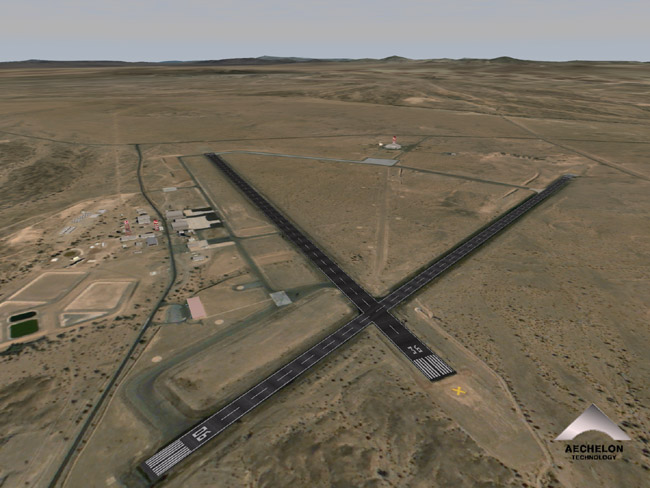
Click logo for Home Page"
T-Tail-Tall-Tail:
Coming Up Short
Kent Davis
C141 Nav 1972-1991
Our normal landing field length for the C-141 was
about 10,000 feet. A few
fields we went to were only about 7,000 feet long
and required special
precautions for takeoff and landing. Any field
shorter than that required an
instructor pilot and special permission to fly in
and out of.
That field for us was Laguna Army Air Field in
Southern Arizona, just 20 miles
north of Yuma, Arizona. The field was only 4,500
feet long and it was a
challenge to get into and out of. We frequently flew
there for special
parachute drop training with the US Army.

We could neither land nor take off if it was raining, but being as it was
Southern Arizona, of course, it hardly ever rained. The other factor that
limited our use of the field was the heat; that is when the temperature exceeded 40 degree Celsius (100+ Fahrenheit), which was not
unusual for Southern Arizona, we could only take off with a partial load. At those times all we could carry out
of there was a minimum load of fuel and five or six
thousand pounds of cargo.
(A normal load was 20,000 to 40,000 pounds of cargo
and a max load was 75,000
pounds with a long runway on a cold day.) If we
were taking up a big load on a hot day the Army had to truck the load down to the
Yuma Air Field, which was over twice as long as the Laguna Air Field.
Laguna AAF was a place where a pilot had to watch
his step in order to keep
from going off the end of the runway. When he came
in to land the aircraft he
needed to be low (just over the top of the power
wires prior to the end of the
runway), slow (right on approach speed) and plant
the aircraft (land
firmly/hard) on the numbers (the beginning end of
the runway pavement). If this
was not the case the other end of the runway could
come up a lot faster than
one wanted to imagine.
The catch here was that most of our young instructor
pilots were trying to
prepare themselves for the commercial airlines,
where a good pilot does not
plant the aircraft on the number, spill the
passenger's drinks or rattle his crew's teeth. Therefore as they flew the line and
landed at the normal 10,000
foot runways they practiced the technique of
floating the aircraft just before
the touch down. Thereby landing the plane with a
"gentle touch".
And thus we came to Laguna Air Field one bright hot afternoon, on airspeed, altitude and over the numbers but with a pilot not at Laguna but at some 10,000 foot runway, miles away. As the aircraft crossed over the numbers, at 50 feet above the pavement, he pulled back on the yoke to float the aircraft and set her down easy.
As the nose came up 5 degrees I shouted, over the
roar of the engines, "Don't
float!"
The pilot yanked the throttles back to idle, pushed
the nose over and the
aircraft dropped onto the runway, then the he put
all four engines into reverse
and stood on the brakes.
The aircraft came to a stop three feet from the end
of the runway. It had not
gone into the dirt but the pilot could only see dirt
and not the end of the
runway. (The front wheels are about six feet behind
where the pilot sits in the
nose of the aircraft)
The scanner opened a door and went outside on a long
intercom cord to walk with
the aircraft through a turn back to the taxiway.
Hours and hours of tedious boredom punctuated with
minutes of sheer terror. Or
should I say, any landing you can walk away from is
a good, landing.